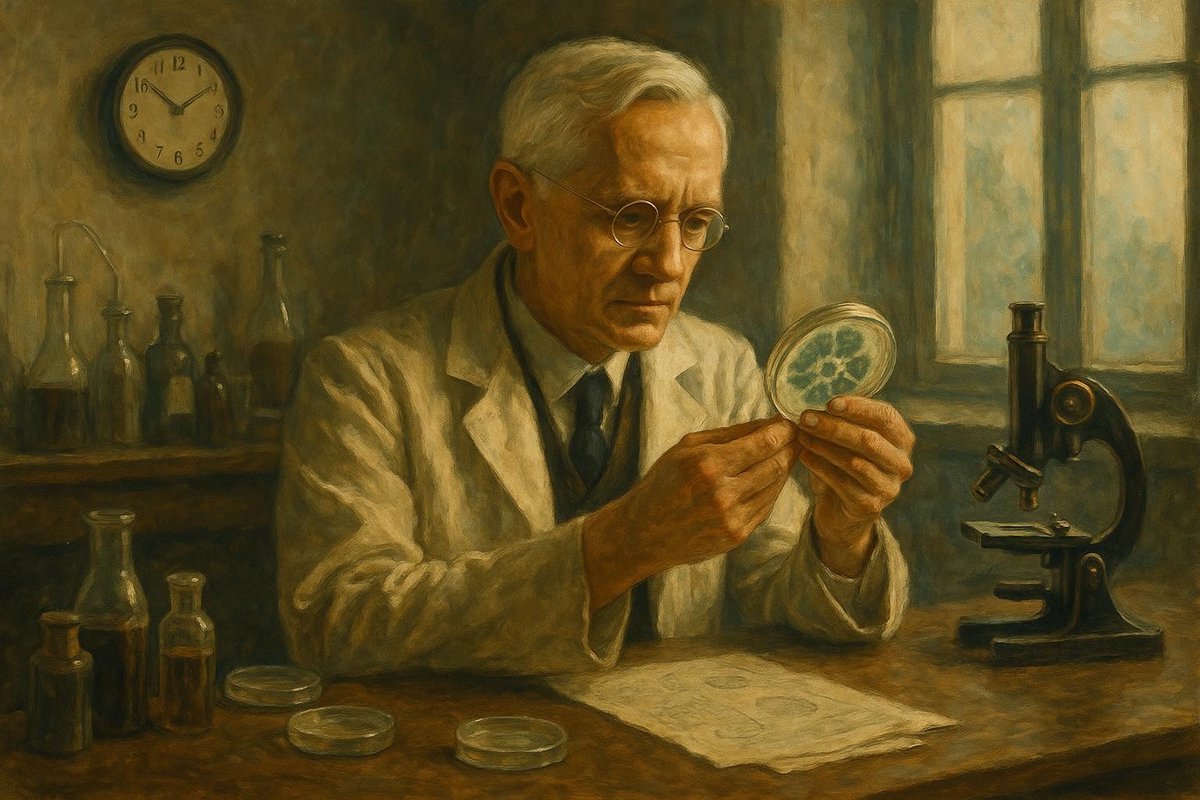
Origin: A Laboratory Accident That Changed the World
In 1928, a simple laboratory accident at St. Mary’s Hospital in London sparked a revolution in medicine. Alexander Fleming, a bacteriologist known for his meticulous work, was the unlikely protagonist in this tale of serendipity. While examining Petri dishes, Fleming noticed something peculiar: a mold, Penicillium notatum, was dissolving the bacteria around it. Curiously, many people might wonder how such a simple observation could lead to groundbreaking change. But it did, and it shook the very foundations of medical science.
- Before 1928, bacterial infections often led to serious illness or even death.
- Traditional treatments were largely ineffective or nonexistent.
- Fleming’s discovery introduced the concept of antibiotics to the world.
This moment of chance was like uncovering a hidden musical note in a symphony, one that would harmonize the discord of infectious diseases with the melody of healing. It was a time when the world was transitioning from relying solely on natural immunity and primitive treatments to a more scientific approach in combating disease.
Key Figures: The Unsung Heroes and Visionaries
While Fleming’s name is often synonymous with penicillin, it was not a solo performance. Howard Florey and Ernst Boris Chain, researchers at Oxford University, amplified Fleming’s initial discovery into a medical marvel. In 1940, they demonstrated penicillin’s potential by successfully treating bacterial infections in mice. Interestingly, it takes a village to turn a spark into a flame.
- Fleming made the initial discovery but was unable to purify penicillin effectively.
- Florey and Chain’s work led to mass production and clinical trials.
- Their collective perseverance brought penicillin to the forefront of medicine.
They worked tirelessly through the dark shadow of World War II, a period when the need for effective treatments was dire. This trio was like a symphony of minds, harmonizing their skills to compose a masterpiece that would save countless lives.
Turning Point: War, Urgency, and Innovation
The escalation of World War II created an urgent need for effective treatments for wounded soldiers. This environment of necessity spurred innovation and led to penicillin being produced on an industrial scale by 1944. Of course, necessity is often the mother of invention, and the war acted as a catalyst in this scientific endeavor.
- Large-scale production began in the United States through government and industrial collaboration.
- By D-Day in 1944, enough penicillin was produced to treat Allied soldiers.
- The war forced a rapid acceleration in pharmaceutical research and manufacturing techniques.
This scenario was akin to the urgency of composing a symphony under a tight deadline, where each note had to be meticulously placed to ensure victory. The collaborative efforts between nations and scientists highlight how adversity can lead to unparalleled human achievement.
Impact on the World: A New Era of Medicine
Penicillin marked the dawn of the antibiotic era, fundamentally altering our approach to medicine. It transformed once-deadly infections into manageable conditions, saving millions of lives each year. The world witnessed a paradigm shift, akin to discovering a new language that opened endless possibilities in communication.
- Penicillin reduced mortality rates from bacterial infections dramatically.
- It paved the way for the development of other antibiotics.
- The discovery influenced medical research, public health policies, and clinical practices globally.
The ripples of this discovery continue to extend through history, much like the echoes of a symphony resonating long after the final note has been played. Penicillin not only treated infections but also changed the course of medical knowledge, setting a new standard for future discoveries.
Fuel Someone Else’s Curiosity
If this tale of accidental discovery and scientific triumph inspires you, why not share it? Discuss it with friends, delve deeper into the stories of those who shaped our world, and let their curiosity fuel yours. The more we share, the more we learn, and who knows? Maybe you’ll spark the next great idea.

Leave a Reply